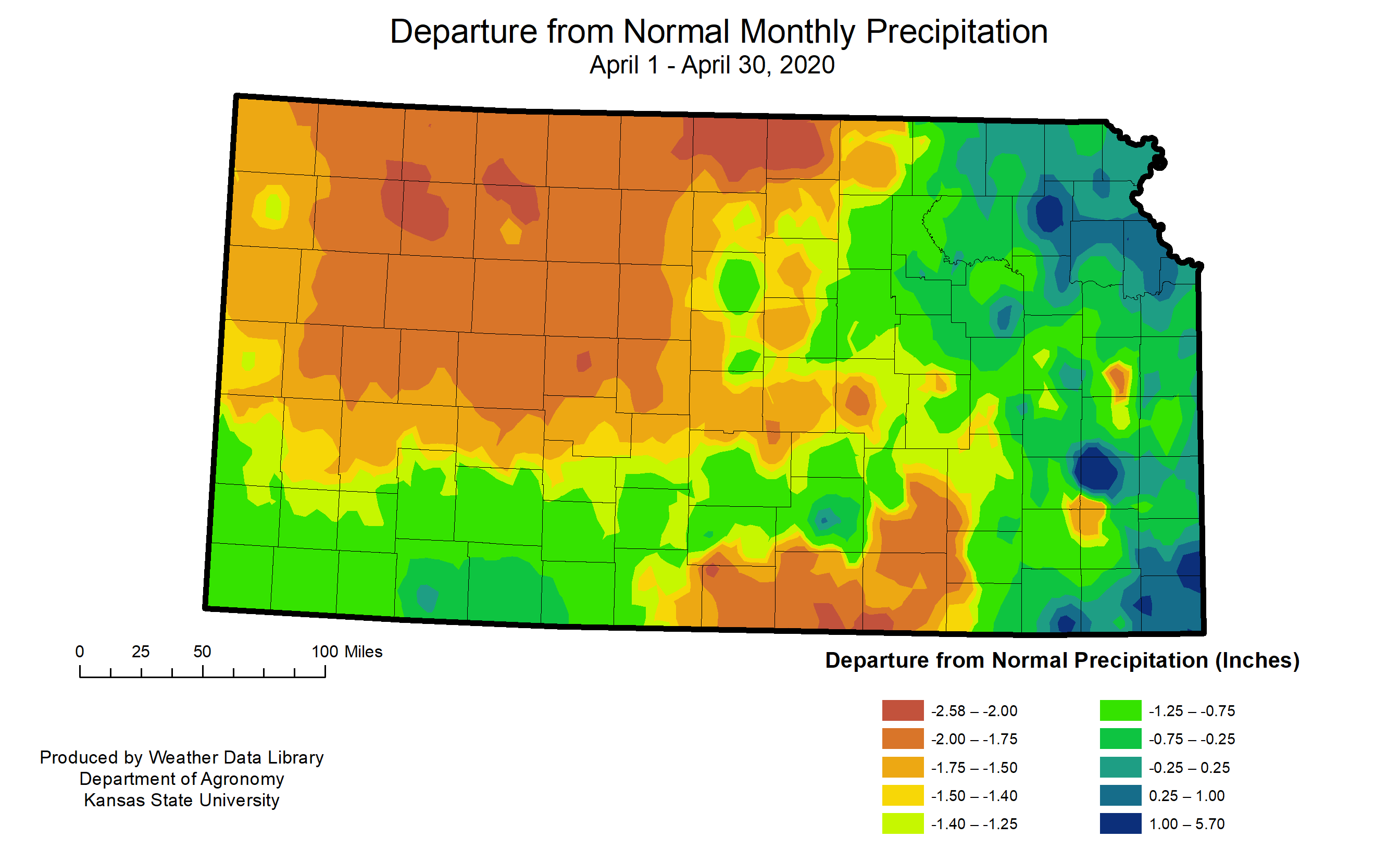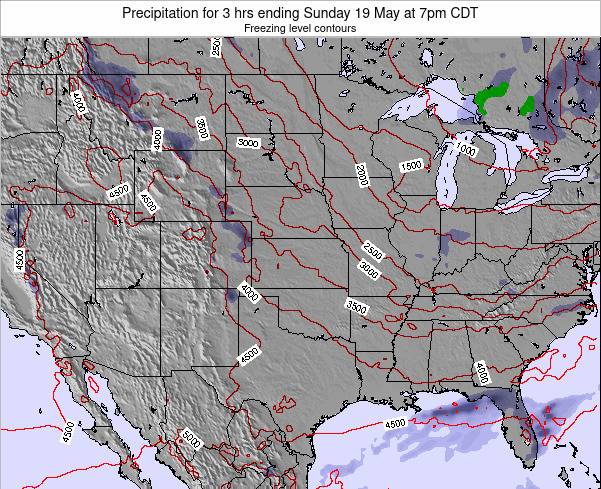

Wichita, Salina, and Manhattan have all had copious amounts of precipitation this spring, but it’s Abilene that has the highest percentile currently of 90. As we know, a stray thunderstorm can drop a lot of rain in one county and miss the next one, so there is variation in percentiles even within the same climate division. Central and eastern Kansas have had more precipitation, and most of those sites have above median precipitation, with a few exceptions. Colby, Dodge City, and Hill City are just three of the locations experiencing one of their 10 driest growing seasons. Eleven of the twelve lowest percentiles are in western Kansas, with Healy and Garden City the most extreme, as both of their growing seasons rank as the driest on record! Looking at Garden City since the beginning of the year, it remains the driest on record (Figure 2). The lack of precipitation in the western third of Kansas is clearly evident in the data. Percentiles less than 50 indicate drier years than the median, and those above 50 are wetter years. A percentile of 50 indicates the median, or middle, value out of all seasons. The listed percentile, 78, means that 78% of the 126 years on record at Manhattan are drier than 2022 for the growing season. For example, at Manhattan, precipitation for the growing season this year ranks as the 98 th driest out of 126 years. Map of Kansas Climate Divisions.Ī quick example to clarify the interpretation of percentiles is in order. Total precipitation from April 1-July 20, 2022, in order of increasing percentile.įigure 1. A better way to compare sites with different periods of record is to sort by percentiles. But, since each site has been around for a different number of years, evaluating sites by ranks doesn’t fairly compare them. The driest of all years ranks 1st, the next driest 2nd, and so forth. The rank listed for each city is calculated by sorting each site’s precipitation totals for the same period in ascending order, from driest to wettest.

Four sites were selected from each of Kansas’ nine climate regions (Figure 1) to give equal representation across all areas of the state. For inclusion, a site must have at least 50 years of data, and each year must have no more than 7 missing records. The dataset for this report consists of precipitation received at 36 different locations across Kansas from the period April 1-J(Table 1), which we will refer to herein as the “growing season” to date.

Rainfall period: April 1 to July 20, 2022 This article will provide some historical perspective of 2022 precipitation thus far. This year, we have a drought situation across much of the state. Additionally, geography favors more moisture for eastern Kansas, with a decrease in averages with western extent. Unfortunately, the nature of climate is the average of extremes on the high and low end of the spectrum. Problems arise when too much or too little precipitation falls. Adequate moisture is a must for crops and ultimately yield.


 0 kommentar(er)
0 kommentar(er)
